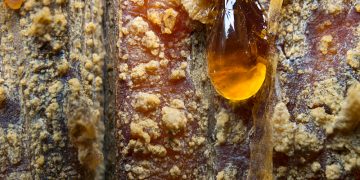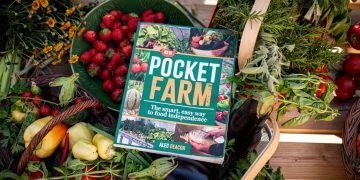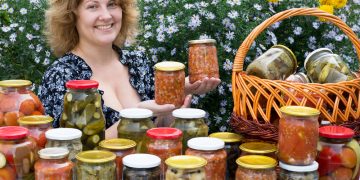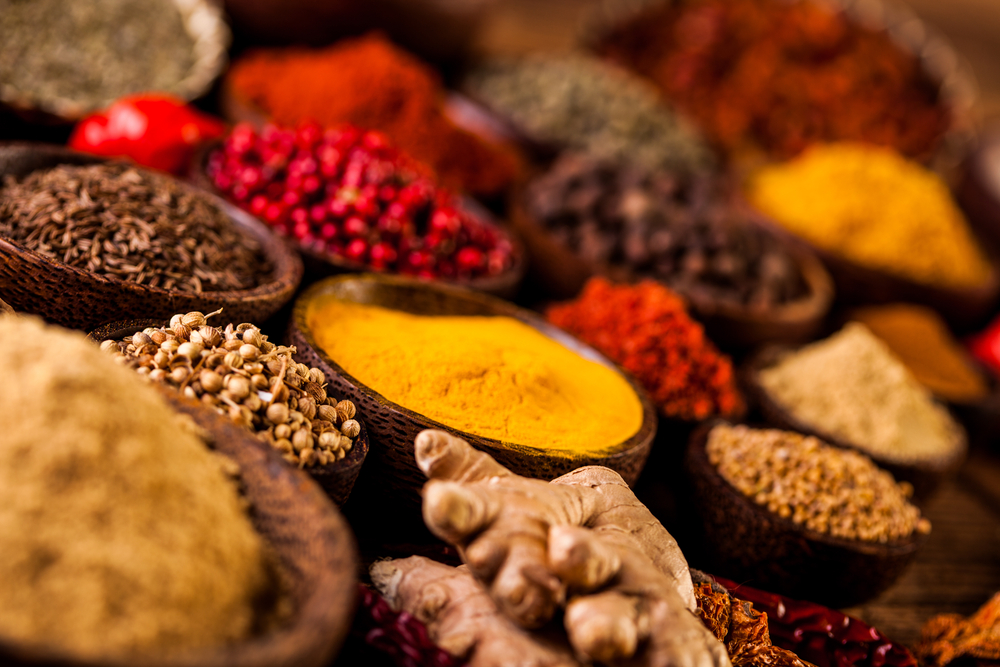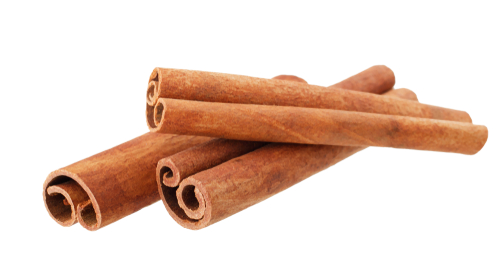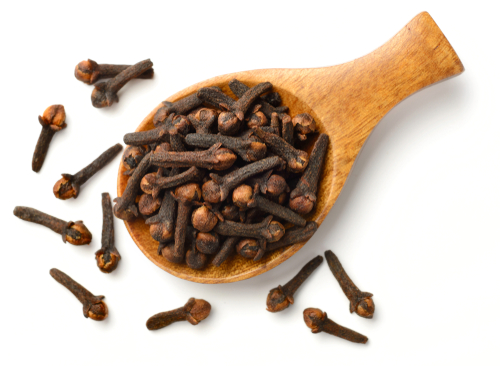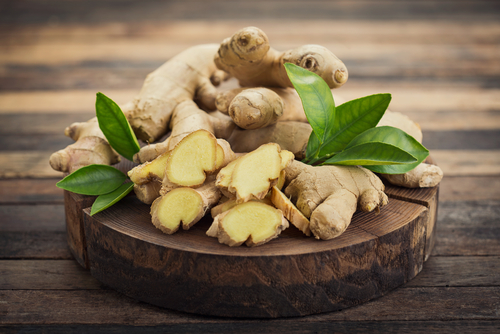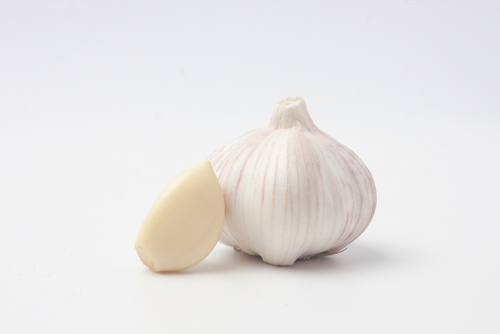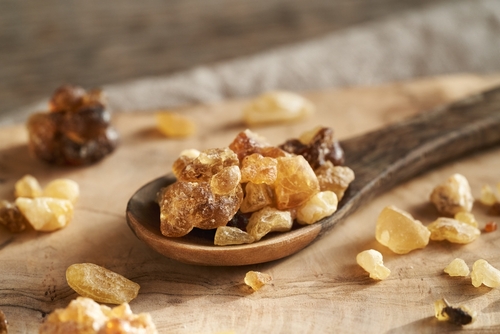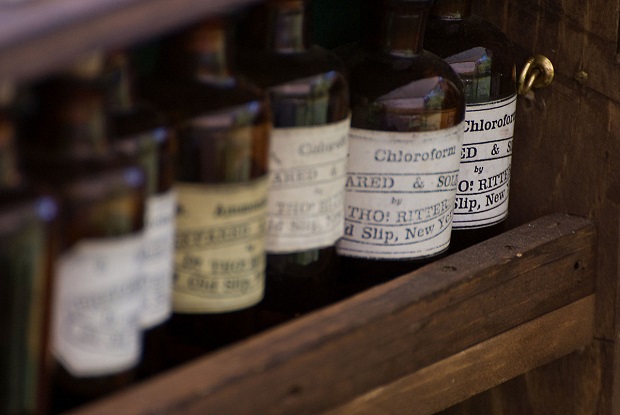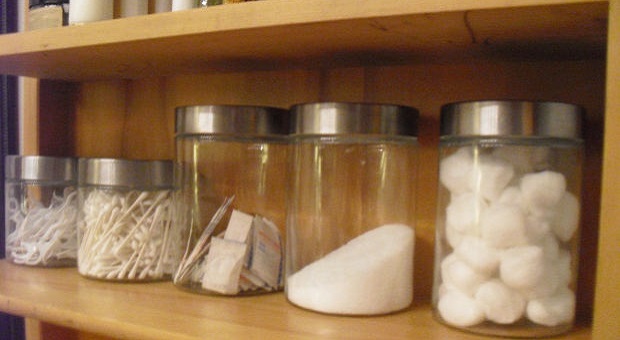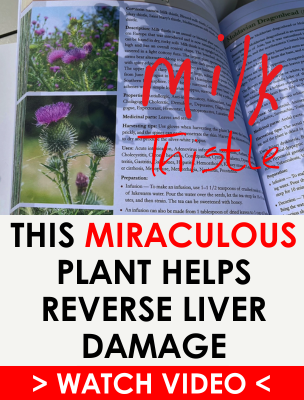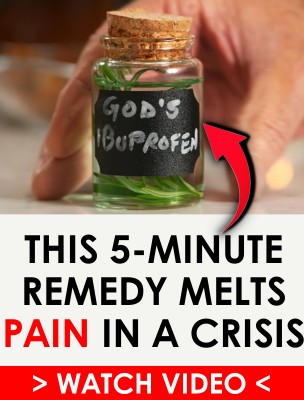When you’re living off-grid or preparing for emergencies, it’s wise to have remedies on hand that can tackle pain and swelling without expiring quickly. I’ll walk you through natural anti-inflammatories that store for years and can help soothe aches and inflammation. These are simple spices, herbs, and oils you can stock in your pantry or survival kit.
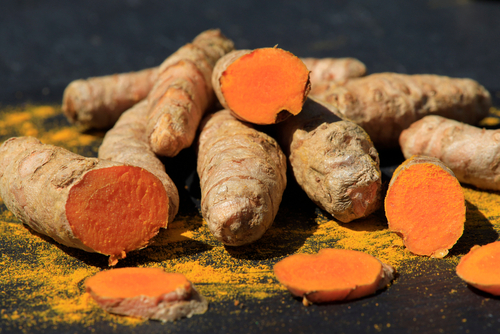 Turmeric
Turmeric
Turmeric is a golden-yellow spice famous for its powerful anti-inflammatory effects. It contains curcumin, a compound that helps reduce inflammation in the body.1 2 In fact, curcumin’s benefits have been compared to mild pain relievers. Many studies show it can ease joint pain and stiffness in arthritis.1 Turmeric is also a multitasker: it’s an antioxidant and has been used traditionally for digestion and wound healing. This makes it a valuable spice to store for both cooking and medicinal use off-grid.
 Best Storage:
Best Storage:
Dried turmeric powder keeps well for 2–4 years when stored in an airtight container in a cool, dark place.3 For even longer shelf life, you can store whole dried turmeric rhizomes or chips (they’re rock-hard when dry) and grind them as needed. Turmeric capsules (high-curcumin extracts) are another option; check their expiration dates, but they often last a couple of years sealed. Keep your turmeric dry – moisture can cause it to cake or lose potency.
Usage:
Use turmeric powder liberally in cooking – for example, add a teaspoon to stews, rice, or make a “golden milk” with hot water/milk. Even off-grid, you can stir turmeric into soups or teas. To get a medicinal effect, adults often take around 500–1,000 mg of curcumin (about 1/2 to 1 teaspoon of turmeric powder) twice daily with food.4 A useful tip: combine turmeric with a pinch of black pepper or a fat like coconut oil to boost absorption of curcumin.5 6 In a survival situation, that could simply mean cooking turmeric in oil or adding a dash of pepper.
Cautions:
Large doses or long-term use of high-potency curcumin can cause stomach upset in some people.7 If you take blood thinners or have a bleeding disorder, be aware that turmeric can have mild blood-thinning effects. Be cautious and consult a doctor if possible before taking concentrated turmeric or curcumin supplements, especially if you are on warfarin or aspirin, are pregnant, or have gallbladder issues.8
 Cinnamon
Cinnamon
This sweet spice is rich in antioxidants that reduce inflammation in the body.9 Using cinnamon could help with swelling and maybe even ease inflammatory pain over time. It won’t replace a strong painkiller, but it can contribute to lowering inflammation in a gentle way. Plus, cinnamon has other benefits: it helps regulate blood sugar and even acts as a natural food preservative due to its antimicrobial properties.10 11
Best Storage:
Store whole cinnamon sticks for the longest shelf life. Whole sticks, kept dry in an airtight container, can easily last 4+ years with minimal loss of flavor. Ground cinnamon powder is convenient but loses potency faster. Aim to use it within 1–2 years for best effect (though it doesn’t truly “spoil”). Keep cinnamon away from heat and light. In an off-grid pantry, a sealed tin or glass jar of cinnamon will stay usable for years. If you can, choose Ceylon cinnamon (“true” cinnamon) especially if you’ll use it daily. It’s lower in coumarin, a natural chemical in cinnamon that can be harmful to the liver in large doses.12
Usage:
You can simply sprinkle cinnamon into your meals or make a tea. About ½ to 1 teaspoon of ground cinnamon a day is a common amount used in studies for health benefits.13 For example, add cinnamon to oatmeal, coffee, or sprinkle on canned fruit to make your survival rations tastier and healthier. Off-grid, you might boil a cinnamon stick with some ginger to make a soothing tea for aches. Cinnamon also pairs well with turmeric and cloves, so you can combine these spices in a “remedy tea” or in cooking for a synergistic effect.
Cautions:
Cassia cinnamon (the common grocery store type) has coumarin, which in large amounts could affect the liver. So don’t overdo daily cinnamon beyond a teaspoon or so, or use Ceylon cinnamon which has negligible coumarin.12 Also, like many spices, cinnamon can mildly thin the blood; if you’re on blood-thinning medication, use cinnamon in moderation and mention it to a healthcare provider. Finally, people with liver disease should be moderate with cassia cinnamon because of the coumarin content.
 Cloves
Cloves
Cloves are the dried flower buds of the clove tree, and they pack a punch. They contain eugenol, a natural compound that is both anti-inflammatory and analgesic (pain-relieving).14 In plain terms, cloves can help decrease inflammation and pain. In fact, clove oil has been shown to reduce inflammation similarly to some medical anti-inflammatory gels – a study on mice found clove’s effects comparable to diclofenac (a common NSAID) in reducing swelling.15 That’s an impressive ability for a humble spice. Cloves have been used for toothaches for this reason. They numb pain and bring down swelling. They’re also strongly antibacterial and even have preservative and insect-repelling qualities (bonus points for preppers).
Best Storage:
Whole cloves store the best. Because they’re hard and dry, whole cloves in an airtight jar can last 3–4 years (or more) while retaining their potency. You’ll know they’re still good if they have that strong clove aroma. Ground clove powder loses strength faster (within 1–2 years). I recommend storing whole clove buds and grinding a little as needed. Keep them dry, dark, and cool. An old trick: good cloves will float vertically in water (due to their oil content) – if you ever doubt their strength, you can test a few. Clove essential oil is another format: a small bottle of clove oil, if kept tightly sealed, can last around 1–2 years before it starts to lose effectiveness.16 So for long-term storage, stick to the dry spice form.
Usage:
For an anti-inflammatory effect, you don’t need a lot of cloves. A couple of cloves can be brewed into a tea (steep 2–3 whole cloves in hot water for 10 minutes) to soothe a sore throat or ease inflammation internally. You can also grind cloves and mix a pinch (say, 1/4 teaspoon) into coffee or sprinkle on food – it’s strong, so a little goes far. For toothache or sore gums, many off-grid folks use clove oil: soak a small piece of cotton in diluted clove oil and apply to the tooth. This can numb pain and reduce gum inflammation. (Important: clove oil is very potent; dilute a drop in a teaspoon of a neutral oil like olive oil to avoid burning your mouth). In a poultice or salve, cloves (or clove oil) can be applied topically to an aching joint to help reduce pain and swelling. Even just including cloves in your cooking (in stews or rice) gives a mild anti-inflammatory intake over time.
Cautions:
Cloves are powerful, so use them with care. Clove oil should never be ingested straight or given to children – even small amounts of clove oil can be toxic to kids and cause liver damage or seizures.17 Always keep clove oil out of reach of kids. If you’re using clove oil topically, remember to dilute it; pure oil can irritate or burn the skin and gums.18 Internally, stick to using the whole or ground spice in small culinary doses. Eugenol in cloves can thin the blood by affecting clotting. If you are on blood-thinning medication or have a bleeding disorder, avoid heavy clove use and definitely avoid clove supplements.19 Diabetics should note that cloves might lower blood sugar a bit, so monitor levels if you’re managing diabetes.20 Lastly, pregnant or breastfeeding women should use only food-level amounts of clove – high doses or clove supplements haven’t been proven safe in pregnancy.21
Ginger
You probably know ginger as a remedy for nausea, but it also contains compounds (like gingerol) that reduce inflammation and pain in the body.22 In fact, ginger has been shown to help with muscle soreness and arthritis pain by lowering inflammatory markers. It’s a bit like a mild herbal ibuprofen – without the quick punch, but with gentle, cumulative effects and added benefits like aiding digestion and immunity. For preppers, ginger is invaluable: it handles inflammation, soothes an upset stomach, fights colds, and more. The best part is, dried ginger stores very well.
Best Storage:
Dried ginger powder is extremely shelf-stable. Keep it in an airtight container, and it will easily last 2–3 years with potency (and likely still be useful beyond that, just slightly less pungent).23 Whole dried ginger pieces or dehydrated slices can last even longer than powder without losing their kick. If you have fresh ginger root, it won’t last more than a few weeks unrefrigerated (a few months if refrigerated or frozen), so for long-term storage, drying it is key. I recommend storing both ginger powder and maybe a jar of ginger tea bags (since those are dehydrated and can store for years as well).24 Keep ginger powder dry and in a cool place – like other spices, humidity is its enemy. Another form is crystallized ginger (ginger cooked in sugar syrup then dried); that can last a long time too due to the sugar acting as a preservative, but it’s more for nausea than strong anti-inflammatory use. A ginger tincture (ginger soaked in alcohol) will also keep for many years, but most people find storing the powder simpler.
Usage:
For inflammation, a ginger tea is one of the best and easiest uses. Take about ½ to 1 teaspoon of dried ginger powder (or a few thin slices of fresh/dried ginger root) and steep in hot water for 10 minutes to make a spicy tea. Drink this 1–3 times a day to help with inflammatory conditions. Many of my patients with arthritis swear by having ginger daily – it can noticeably reduce joint pain over time. You can also chew on a small piece of candied (dried) ginger or include ginger in your cooking (stir-fries, soups, etc.). Ginger works well with other spices: for example, ginger + turmeric + cinnamon in a tea or broth is a potent anti-inflammatory tonic you can whip up with shelf ingredients. Dose-wise, studies on arthritis have used about 1–2 grams of ginger powder per day (that’s roughly 1/2 teaspoon twice a day). There’s no exact science for everyone – ginger is food-like, so a few cups of ginger tea or ginger-spiced food daily is generally beneficial. Externally, you can also use ginger in a compress for sore muscles: boil a chunk of ginger in water, soak a cloth in it, and apply to a sore area to allow the heat and ginger to penetrate. It’s a bit of a luxury in the wild, but it works for temporary relief.
Cautions:
Large doses of ginger (for example, high-dose supplements above 4 grams/day) might cause mild heartburn, diarrhea, or mouth irritation – essentially ginger’s spiciness in overdrive. If you are on blood thinners or have a bleeding disorder, know that ginger, like many anti-inflammatories, can slightly thin the blood and might increase bleeding risk in very high doses. The evidence isn’t conclusive, but as a precaution, keep ginger tea to moderate levels if you’re on warfarin or similar (and skip mega-dose ginger pills).26 Diabetics should be aware very high amounts of ginger could possibly lower blood sugar a bit, so monitor if needed (though normal culinary use is fine).27 Ginger can stimulate bile production, so if you have gallstones, use it with caution (some docs advise against large amounts in gallstone patients). In pregnancy, ginger is famously used for morning sickness and is considered safe in small amounts (like ginger tea or candies) – reputable sources like the American College of Obstetrics actually approve it for nausea.28 Just don’t exceed more than 1 gram a day when pregnant without medical advice.
 Garlic
Garlic
Garlic might not be the first thing you think of for inflammation. We usually laud it for fighting infections, but it actually has noteworthy anti-inflammatory effects too. This pungent bulb contains sulfur compounds like allicin that not only kill germs but also calm inflammatory processes in the body.29 Research shows garlic oil can work as an anti-inflammatory, reducing swelling and pain in conditions like arthritis.30 The Arthritis Foundation even recommends garlic to potentially help prevent cartilage damage in arthritis.31 So, garlic pulls double duty: it’s an immune booster and a mild anti-inflammatory. If you’re off-grid with a limited medical stash, garlic is a gold mine – it can help with infections, inflammation, heart health, and even be applied externally for wounds or fungal issues. And yes, it stores well when properly cured and dried.
Best Storage:
Whole garlic bulbs (heads) will store for many months, even up to a year, if cured and kept in a cool, dry place. “Cured” garlic means it’s been dried after harvest until the skins are papery – most store-bought garlic is already like this. At room temperature in a dark pantry, expect 6 months or so of good quality.32 However, for truly years-long storage, you’ll want to preserve garlic differently: dried garlic flakes or powder can last 2–3 years in a sealed container. You can dehydrate garlic cloves (either slice them or use a dehydrator) until crispy and store them in vacuum-sealed bags or jars with oxygen absorbers – that way they can remain usable for several years. Garlic powder or granulated garlic from the store is fine too; just keep it dry (watch out for clumping if moisture sneaks in). Another method: storing peeled cloves in oil must be done carefully (risk of botulism if not stored cold), so I’d avoid that for long-term unless you refrigerate/freeze it – not practical off-grid. Instead, stick to dried forms.
Fun prepper tip: you can also pickle garlic in vinegar/brine which gives it a 1+ year shelf life; pickled garlic won’t have as strong anti-inflammatory potency (heat and vinegar reduce allicin) but still retains some benefits and is tasty. Overall, to have garlic for years, keep some as whole bulbs for up to a year, and have backup dried garlic for the long haul.
Usage:
Eat it! The simplest way to use garlic as an anti-inflammatory is to include it in your daily meals. Raw garlic has the most allicin. If you can tolerate it, eating 1–2 raw cloves a day (for example, mince it and spread on bread or mix in honey) can act as a potent supplement. Cooked garlic still has benefits too (cooked allicin transforms to other sulfur compounds that are also beneficial), so in stews, stir-fries, etc., garlic will do good. For a more “medicinal” use, you can make a garlic-infused oil or salve to rub on sore joints or muscles. Garlic oil (made by gently heating crushed garlic in olive oil and then straining) was shown to reduce inflammation in research.33 If you have achy joints, you can massage a bit of garlic oil on them – just be aware your skin might smell like garlic after. Another approach: brew a garlic tea (it’s strong and spicy!). Steep 2–3 crushed garlic cloves in hot water for 10 minutes, possibly with some ginger and honey to improve taste, and drink up. This can help with internal inflammation and also acts as an immune tonic if you’re fighting an infection. In survival medicine, garlic can be applied as a poultice for infections – that’s more for its antimicrobial effect, but coincidentally it will also reduce localized swelling. If taking garlic raw, a quick note: crush or chop it and let it sit for about 10 minutes before consuming or adding to hot food – this waiting allows the allicin to form fully, boosting its potency.34 Then use it as desired.
Cautions:
Garlic is safe in food quantities for most people. However, there are a few cautions: if you take blood thinners (e.g., warfarin) or have upcoming surgery, high doses of garlic (especially supplements) can further thin your blood. It’s been documented that garlic supplements can increase the risk of bleeding in people on anticoagulants.35 So, limit to culinary use or moderate amounts and inform a doctor if you’re taking a lot of garlic pills. Garlic can occasionally cause allergic reactions in some individuals – rare but worth mentioning if you notice a rash or asthma after handling/eating garlic (stop using if so). Also, too much raw garlic at once can irritate your mouth or gut – causing burning sensations, heartburn, or even vomiting if you really overdo it. I’ve seen a patient who ate an entire head of raw garlic and ended up with a very upset stomach! Moderation is key. If you handle a lot of fresh garlic, it can cause mild skin burns (“garlic burn” is a thing), so wear gloves if peeling tons of cloves.36 And finally, your breath will announce your garlic habit to everyone around – not a health risk, but maybe a social one! In summary, garlic is a must-have for preppers due to its wide benefits and solid shelf life. Just be mindful of its blood-thinning effect and stomach irritancy in large amounts.
 Frankincense (Boswellia)
Frankincense (Boswellia)
Frankincense, also known as Boswellia, is a resin from the Boswellia tree and is a remarkable natural anti-inflammatory. This is an ancient remedy – resin from frankincense has been used for thousands of years not just in incense, but in medicine (for arthritis, wounds, etc.). Modern research has identified boswellic acids in frankincense that powerfully reduce inflammation.37 Boswellia can inhibit inflammatory enzymes and has been shown to improve symptoms of osteoarthritis and rheumatoid arthritis in studies.38 Some trials found frankincense extract helped joint pain and stiffness and even was comparable to certain NSAIDs (like it helped people reduce use of standard meds). It’s also being explored for inflammatory bowel diseases and asthma because of its inflammation-calming effects.39 40 For a prepper, frankincense is interesting because it’s multi-purpose: anti-inflammatory, possibly anti-anxiety (the aroma is calming), and even insect-repelling when burned. And as a dry resin, it stores for practically forever.
Best Storage:
Frankincense resin usually comes in small amber-colored chunks or tears. In this raw form, it’s very stable – essentially dried tree sap. Keep the resin in a sealed jar or pouch away from moisture, and it will last for many years (5+ years easily, and really it won’t spoil; it might just lose a tiny bit of aroma potency over time). Think of how archaeologists find resins in ancient tombs that are still aromatic – frankincense is like that. If you get a boswellia extract supplement (capsules), those typically have a shelf life of a couple years on the bottle. They contain the powdered resin or extract. Store those in a cool, dry place as well; they may last beyond the expiration but might slowly lose effectiveness. Another way to store is a frankincense tincture or oil, but those are less common. The resin itself is your best bet for long-term storage: no refrigeration needed, just keep it dry. One tip: don’t store resin in heat above, say, 90°F for long periods – it can get extra sticky or degrade some of the volatile oils. In normal room conditions it’ll be fine. If it does get very hard and dry, you can still use it; hardness doesn’t mean it’s bad.
 Usage:
Usage:
Using frankincense internally usually means taking boswellia extract capsules. A typical dose used in studies for arthritis is around 300–500 mg of boswellia extract, taken 2 or 3 times daily.40 If you have a prepared capsule, follow its instructions. If you only have the raw resin off-grid, you can actually chew a small piece of the resin like gum (it’s a traditional use). It starts bitter but then becomes a bit like chewing gum. Chewing a pea-sized piece once or twice a day can deliver some of the boswellic acids (just don’t swallow the wad of resin – spit it out after chewing it for a while, as it’s not really digestible). Another method: make a tea or decoction by simmering a few pieces of frankincense resin in water – however, boswellic acids are not very water-soluble, so this is not very efficient. A better method if you don’t have capsules: powder the resin (it’s easier to powder if you freeze it then crush, or use a dedicated grinder) and mix the powder with a bit of honey or water and ingest it. Dosage would be small – maybe 1/4 teaspoon of frankincense powder, twice a day. Boswellia doesn’t give immediate pain relief like a Tylenol; expect results over days to weeks of regular use, as it reduces inflammation gradually. For asthma or respiratory inflammation, people sometimes burn frankincense and inhale the smoke (hence its history as incense). The smoke has anti-inflammatory compounds that help the lungs, supposedly. You could cautiously try a frankincense steam: put a piece in hot water and inhale the vapors. Externally, you can infuse frankincense in oil to make a massage oil for sore joints. Just drop a few resin pieces in a jar of olive oil and leave in a warm spot for a couple weeks to infuse, then use that oil on painful areas. Frankincense oil or cream is available commercially too. Off-grid, a simple use is to light a piece of resin on a charcoal – the soothing scent can reduce stress and possibly have mild anti-inflammatory effects via inhalation.
Cautions:
If you’re pregnant, avoid frankincense internally. High doses in animals suggested a risk for the pregnancy (possible increase in miscarriage risk).41 So, out of an abundance of caution, pregnant women shouldn’t take boswellia. If you’re breastfeeding, it’s also wise to avoid due to lack of data. Frankincense may interact with certain medications – notably it might add to the effect of other anti-inflammatories. If you happen to be taking NSAIDs (like ibuprofen) or blood thinners, boswellia could potentially increase their effect or risk of side effects. There is some evidence it could potentiate warfarin’s blood thinning, for example.42 So, as always, consult a medical professional if mixing remedies with meds. A small number of people have reported upset stomach, nausea, or diarrhea from boswellia – typically if taking high doses.43 It can rarely cause heartburn or skin rash. If you notice any weird symptoms, cut back the dose or stop. Also, ensure you have true Boswellia serrata resin or a reputable product.
Conclusion
In an off-grid or emergency setting, having natural anti-inflammatories with a long shelf life can be a game-changer.
Remember that severe or persistent inflammation (like a serious infection or injury) might still need professional medical care if available. However, for many everyday aches – the swollen ankle, the sore back, the arthritic knee, or the chronic inflammatory issues – these time-tested natural anti-inflammatories can provide real relief and improve your quality of life off-grid. They connect modern survivalism with ancient wisdom. Plus, growing or trading for things like garlic, ginger, or willow gives you a renewable medicine chest. So stock up on these long-lasting remedies, store them well, and you’ll be well-prepared to tackle inflammation naturally, keeping you and your family healthier wherever you are.
Others Are Watching Now:
References
[1] [5] [6] [7] [8] Turmeric benefits: A look at the evidence – Harvard Health
https://www.health.harvard.edu/staying-healthy/turmeric-benefits-a-look-at-the-evidence
[2] [4] Turmeric Health Benefits and Side Effects – Cleveland Clinic
https://health.clevelandclinic.org/turmeric-health-benefits
[3] Can Turmeric Powder Go Bad? 7 Signs & Storage Tips – SGR Foods https://www.sgr777foods.com/blog/can-turmeric-powder-go-bad/?srsltid=AfmBOoq32TtkIZE3XiX7OAUmUQeEQSlxq5292DZXpmlW3tBtlJWhIBx-
[9] [10] [11] [12] [13] 10 Evidence-Based Health Benefits of Cinnamon – Healthline
https://www.healthline.com/nutrition/10-proven-benefits-of-cinnamon
[14] [17] [18] [19] [20] [21] 5 Potential Health Benefits of Cloves – Cleveland Clinic
https://health.clevelandclinic.org/benefits-of-cloves
[15] A comprehensive review on clove essential oil and its significance – Frontiers in Nutrition
https://www.frontiersin.org/journals/nutrition/articles/10.3389/fnut.2022.987674/full
[16] How Long Does Clove Oil Typically Last? – Always Go With The Best!
https://thebestproductreviewed.ghost.io/how-long-does-clove-oil-typically-last/
[22] [23] [24] [26] [27] [28] Ginger Benefits – Johns Hopkins Medicine
https://www.hopkinsmedicine.org/health/wellness-and-prevention/ginger-benefits
[29] [33] [34] Garlic – Linus Pauling Institute, Oregon State University
https://lpi.oregonstate.edu/mic/food-beverages/garlic
[30] [31] [35] [36] 6 Garlic Benefits To Boost Your Health – Cleveland Clinic
https://health.clevelandclinic.org/6-surprising-ways-garlic-boosts-your-health
[32] How Long Does Garlic Last & How To Tell When It’s Bad – MindBodyGreen
https://www.mindbodygreen.com/articles/how-long-does-garlic-last-how-to-store-it?srsltid=AfmBOooMJO0IbNU1Z1j24w_TMoiV9NV_et5N3hkEXE9KR0H409pMG7UZ
[37] [38] [39] [40] [41] [42] [43] Frankincense – Healthline
https://www.healthline.com/nutrition/frankincense



